Unique seeding profiles and prion-like propagation of synucleinopathies are highly dependent on the host in human α-synuclein transgenic mice
- PMID: 35488930
- PMCID: PMC9199436
- DOI: 10.1007/s00401-022-02425-4
Unique seeding profiles and prion-like propagation of synucleinopathies are highly dependent on the host in human α-synuclein transgenic mice
Abstract
α-synuclein (αSyn) is an intrinsically disordered protein which can undergo structural transformations, resulting in the formation of stable, insoluble fibrils. αSyn amyloid-type nucleation can be induced by misfolded 'seeds' serving as a conformational template, tantamount to the prion-like mechanism. Accumulation of αSyn inclusions is a key feature of dementia with Lewy bodies (DLB) and multiple system atrophy (MSA), and are found as additional pathology in Alzheimer's disease (AD) such as AD with amygdala predominant Lewy bodies (AD/ALB). While these disorders accumulate the same pathological protein, they exhibit heterogeneity in clinical and histological features; however, the mechanism(s) underlying this variability remains elusive. Accruing data from human autopsy studies, animal inoculation modeling, and in vitro characterization experiments, have lent credence to the hypothesis that conformational polymorphism of the αSyn amyloid-type fibril structure results in distinct "strains" with categorical infectivity traits. Herein, we directly compare the seeding abilities and outcome of human brain lysates from these diseases, as well as recombinant preformed human αSyn fibrils by the intracerebral inoculation of transgenic mice overexpressing either human wild-type αSyn or human αSyn with the familial A53T mutation. Our study has revealed that the initiating inoculum heavily dictates the phenotypic and pathological course of disease. Interestingly, we have also established relevant host-dependent distinctions between propagation profiles, including burden and spread of inclusion pathology throughout the neuroaxis, as well as severity of neurological symptoms. These findings provide compelling evidence supporting the hypothesis that diverse prion-type conformers may explain the variability seen in synucleinopathies.
Keywords: Alzheimer’s disease with amygdala predominant Lewy bodies; Amyloid; Dementia with Lewy bodies; Multiple system atrophy; Prion; Strains; Synucleinopathy; α-synuclein.
© 2022. The Author(s), under exclusive licence to Springer-Verlag GmbH Germany, part of Springer Nature.
Conflict of interest statement
Figures

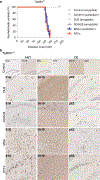
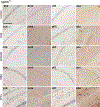
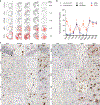
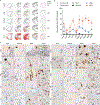

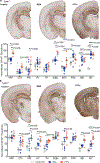
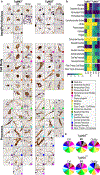
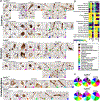

Similar articles
-
Is Multiple System Atrophy a Prion-like Disorder?Int J Mol Sci. 2021 Sep 18;22(18):10093. doi: 10.3390/ijms221810093. Int J Mol Sci. 2021. PMID: 34576255 Free PMC article. Review.
-
A multiverse of α-synuclein: investigation of prion strain properties with carboxyl-terminal truncation specific antibodies in animal models.Acta Neuropathol Commun. 2024 Jun 10;12(1):91. doi: 10.1186/s40478-024-01805-z. Acta Neuropathol Commun. 2024. PMID: 38858742 Free PMC article.
-
Disease-, region- and cell type specific diversity of α-synuclein carboxy terminal truncations in synucleinopathies.Acta Neuropathol Commun. 2021 Aug 28;9(1):146. doi: 10.1186/s40478-021-01242-2. Acta Neuropathol Commun. 2021. PMID: 34454615 Free PMC article.
-
Brain-derived and in vitro-seeded alpha-synuclein fibrils exhibit distinct biophysical profiles.Elife. 2024 Nov 25;13:RP92775. doi: 10.7554/eLife.92775. Elife. 2024. PMID: 39584804 Free PMC article.
-
Fibril-seeded animal models of synucleinopathies: Pathological mechanisms, disease modeling, and therapeutic implications.Neurosci Res. 2025 Jul;216:104905. doi: 10.1016/j.neures.2025.04.008. Epub 2025 Apr 30. Neurosci Res. 2025. PMID: 40316176 Review.
Cited by
-
Cellular processing of α-synuclein fibrils results in distinct physiological C-terminal truncations with a major cleavage site at residue Glu 114.J Biol Chem. 2023 Jul;299(7):104912. doi: 10.1016/j.jbc.2023.104912. Epub 2023 Jun 10. J Biol Chem. 2023. PMID: 37307916 Free PMC article.
-
Soluble and Insoluble Lysates from the Human A53T Mutant α-Synuclein Transgenic Mouse Model Induces α-Synucleinopathy Independent of Injection Site.Int J Mol Sci. 2025 Jun 28;26(13):6254. doi: 10.3390/ijms26136254. Int J Mol Sci. 2025. PMID: 40650031 Free PMC article.
-
Limitations and Applications of Rodent Models in Tauopathy and Synucleinopathy Research.J Neurochem. 2025 Mar;169(3):e70021. doi: 10.1111/jnc.70021. J Neurochem. 2025. PMID: 40026260 Free PMC article. Review.
-
Effect of host and strain factors on α-synuclein prion pathogenesis.Trends Neurosci. 2024 Jul;47(7):538-550. doi: 10.1016/j.tins.2024.05.004. Epub 2024 May 27. Trends Neurosci. 2024. PMID: 38806297 Free PMC article. Review.
-
Overexpression-Induced α-Synuclein Brain Spreading.Neurotherapeutics. 2023 Jan;20(1):83-96. doi: 10.1007/s13311-022-01332-6. Epub 2022 Dec 13. Neurotherapeutics. 2023. PMID: 36512255 Free PMC article. Review.
References
-
- Aguzzi A, Rajendran L (2009) The Transcellular Spread of Cytosolic Amyloids, Prions, and Prionoids. Neuron 64:783–790 - PubMed
Publication types
MeSH terms
Substances
Grants and funding
LinkOut - more resources
Full Text Sources
Medical
Miscellaneous

